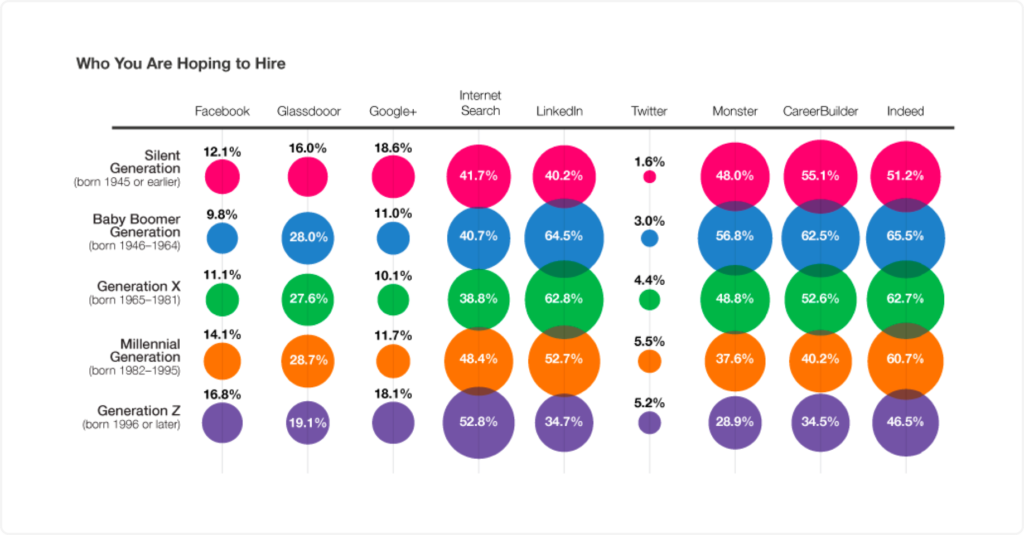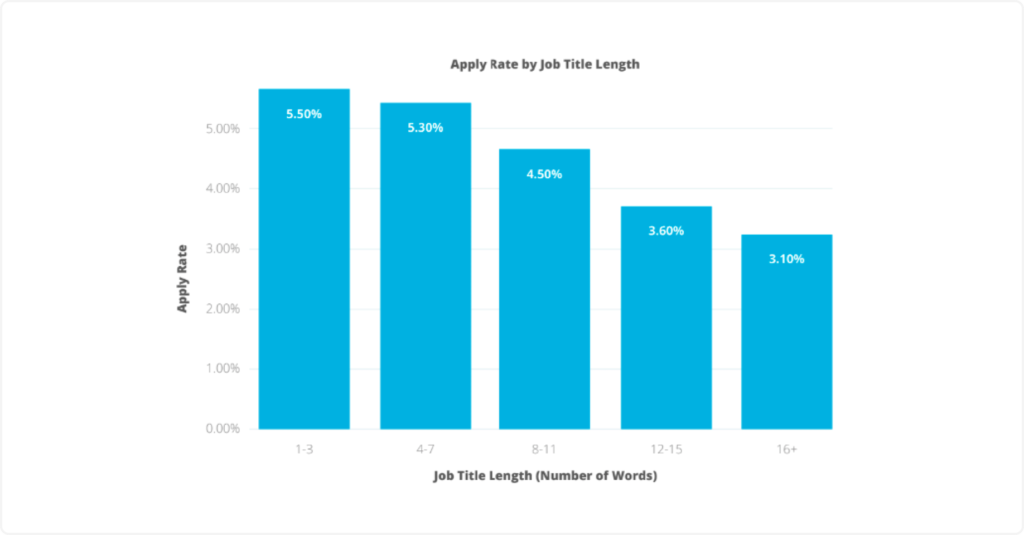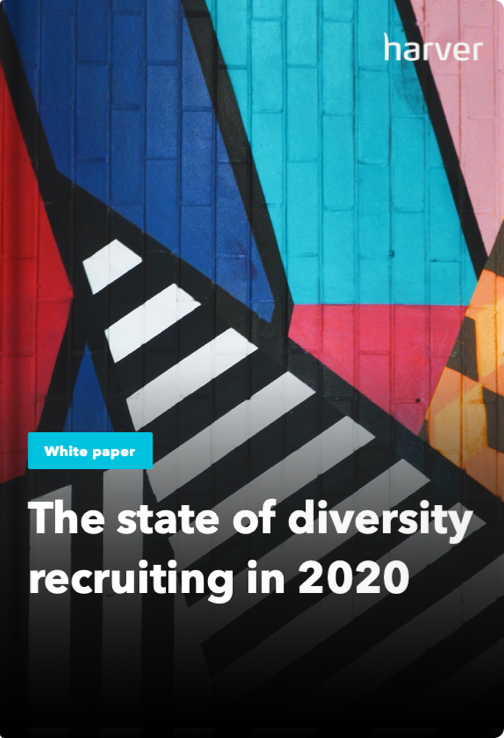With unemployment rates at an all-time low at just 3.5%, employers need to get creative to attract the best talent. Gone are the days where this was optional. In this climate, it’s imperative.
That’s why companies across virtually every industry are coming up with recruitment campaigns to convince candidates to apply for their jobs. Some of these campaigns are successful, and some, well… aren’t. This begs the question, how can you launch a recruitment campaign that ultimately results in amazing new hires?
Luckily for you, we’re going to answer precisely that here in this article. Continue reading to find out more!
What’s in?
What’s a recruitment campaign?
In short, a recruitment campaign is a process undertaken by an employer to encourage a flow of top-notch candidates to apply for their vacancies. Just like a traditional marketing campaign, a recruitment campaign is also geared towards a specific target audience, communicates a crucial message, and is published on multiple channels, usually online.
How do you build a successful recruitment campaign?
So, now that we know what a recruitment campaign actually is, how do you go about launching a successful one?
1. Define your target audience
By ‘target audience,’ we mean, thinking about who your dream job applicants are. Who do you want to attract? Fresh grads, junior-level employees, or more senior candidates? What are your ideal candidate profiles? Try to be specific but, at the same time, inclusive of different groups of people.
It’s always handy to create what we call a ‘talent pool.’
This is a pool of candidates who might not be the right fit for your current vacancy but could be ideal for a future opportunity.
The key takeaway: What we’re saying is, don’t be so blinkered by your ‘perfect candidate’ criteria that you pass up on talent you could rely on at some point during the future.
Now we’ve clarified that, let’s circle back to your ideal ‘target candidate’ for a sec. Are you trying to hire Gen X, Gen Y, Millennials, Boomers, etc.? Are you recruiting for a particular skill or someone with specific experiences or education? Whoever you’re looking for, you’ll have to tailor the messaging and visuals in your campaign to suit your audience (but more on that in a sec!).
Let’s take a quick look at this consumer marketing example.
Lincoln hired a household name, Matthew McConaughey, to advertise its latest car. When you compare this to one of the ads Tesla launched at around the same time, you see these two car brands are targeting very different audiences. While Lincoln appeals to the ‘everyman,’ Tesla’s ad clearly attracts shoppers boasting more futuristic outlooks.

When defining your target audience, understand how different generations look for jobs online.
2. Do your research
Before you even think about launching a recruitment campaign, you need to do your research.
More specifically, it’s vital to get a feel for how people perceive your brand. For example, how prospects view you as an employer, and more importantly, how that compares with the way you want to be seen?
A great example of this in action is Goldman Sachs. They did a fantastic job of researching potential candidates before launching their ‘day in the life’ recruitment ad. This campaign is a first-rate attempt at attracting the next generation of bankers.
Goldman Sachs got wind of the fact that an increasing number of young professionals didn’t want to work somewhere like Wall Street. This is what Amanda Rubin, Global Co-Head of Brand and Content Strategy, had to say about their campaign: “One of our primary objectives for brand marketing at Goldman Sachs is to showcase the firm as an employer of choice… We are highly focused on marketing’s role in attracting talent and showcasing the culture of the firm, which is what the new campaign aims to do.”
The HR team at Goldman Sachs took the time to conduct extensive research to understand the public’s perception of their employer brand better. They used third-party surveys and a sample of more than 40,000 people to get an insight into a vast array of metrics, including:
- Favorability
- Reputation
- Diversity
- Innovation
- Culture
- Job specifics
Goldman Sachs admits they didn’t always like the answers they received, but this data was 100% necessary to fuel their recruitment campaign.
Like what you see?
Don’t miss out. Subscribe to our quarterly digest to get the latest TA and TM resources delivered right to your inbox.
3. Set goals for your campaign
In amongst positive feedback, they also had people describe the Goldman Sachs brand as “competitive,” “elitist,” and “cutthroat”. With this info at their disposal, they were then able to launch a kick-butt recruitment campaign to tackle some of these objections.
It almost goes without saying, you can’t evaluate the success of your campaign without setting goals. But, don’t reach for just any old target; instead, use SMART goals.
SMART goals stand for:
- Specific: Define a ‘specific’ goal you want to accomplish and outline why you must achieve it.
- Measurable: Ensure the goal is quantifiable
- Achievable: The goal has to be feasible; otherwise, you’re setting you and your team up for failure.
- Reasonable: Your goal has to be worth your time
- Time-based: Set a timeframe for reaching your goal
So, as you’ve probably gathered, your goals need to list a specific achievement that you can measure. This should include how long it’ll take for you to reach your target, and how you’ll achieve your goal.
Let’s look at an example.
Say, you want to increase the number of qualified entry-level candidates that apply for your job vacancies. Perhaps last year, you drew in 100 applicants. In light of that, here’s one example of how you could use SMART goals to finetune your objectives:
“I want to attract 110 qualified entry-level candidates by the end of Summer 2020.”
- Specific: Attract 110 qualified entry-level candidates
- Measurable: Yes, it’s a 10% increase
- Achievable: Yes
- Reasonable: Yes
- Time-based: End of Summer 2020.
As you can see, using SMART goals, you now have a clear plan for your target. It obviously ticks all the boxes; it’s specific, measurable, achievable, worthwhile, and the time frame is suitable. See how exact it is? You and the rest of your HR team now have a concrete target to work towards.
The state of diversity recruiting in 2020
4. Research keywords
If you’re targeting applicants using Google Ads, you’ll need to conduct thorough keyword research. This is the only way to see what candidates are actually searching for on Google.
As you can imagine, the keywords you optimize your ads for have a massive bearing on who’s exposed to your campaign. Think about whether you’re looking to recruit active or passive job seekers. The search terms applicants use will differ depending on how committed they are to finding a new job.
Google determines which ad to show people based on the relevance and quality of your ad. This is why optimizing your campaign for the right search term is crucial to running a successful Google ad.
As such, it’s usually easier to reach active job candidates with an ad containing a direct link to your online job application. Whereas, you’re more likely to intrigue passive candidates with informative content, say a blog post, or a whitepaper. So, bear that in mind while planning your ad campaign.
Okay, so back to finding the best keywords for your ads. Head over to Google’s Keyword Planner, and plug in the kind of search terms you think your ideal candidates are looking for. Then, take a peek at the search volumes for all your potential keywords. This ensures the word or phrase has the potential to reach enough people to make the ad worth your while.
At the same time, you want to ensure the competition for your chosen keyword isn’t too high. The last thing you want to do is compete with loads of other companies who are all fighting for the same online space.
Last but not least, consider whether you want to bid on “broad matches.” This refers to search terms that Google thinks fulfill the prospect’s same intention as your chosen keyword. Or, are you just going to bid on “phrase matches”? As you may have already gathered, this is where you only bid on searches that use the exact phrase you’ve opted for.
Really, it’s swings and roundabouts. Broad matches tend to expose your ad to a wider audience. But, there’s a higher chance you’ll pay for ads that don’t reach your ideal job applicants. So, we suggest doing some testing to see what works best for you.

Shorter job titles get more clicks. Take it into consideration when doing your keyword research and deciding on the job title.
5. Select your media
Selecting the type of media for your recruitment campaign isn’t as simple as it sounds. First off, you need to consider where you’ll publish your campaign – different social media platforms, display advertising, your website, etc.?
Then, you need to ensure your ads are tailored to suit the medium you’re planning on using.
The key takeaway: Start with your advertising platform, and then select the format for your ad, not vice versa.
6. Refine your messaging
Your message should be clear to your target audience. They must see what you want them to see.
So, consider the following questions:
- What does your ideal applicant want to hear?
- What differentiates you from your competitors?
- What do you have to offer?
- Do you have particular employee benefits?
- Does your company give new hires lots of responsibility?
- Has your brand won any awards?
Think about these questions and use the answers to fuel the key messages in your ad.
This may seem obvious, but don’t exaggerate the truth. It only leads to problems further down the road.
But, whatever it is that you’ve got to brag about, make it clear from the outset. This works wonders for attracting high-quality candidates with a genuine interest in working with you.

56%
of job ad clicks happen on a mobile device.
Source: Appcast
A lot of job seekers click on the job ads on their mobile device and almost half of candidates also apply on mobile. Keep that in mind when designing your campaign and make it easy for your potential applicants to get more information.
7. Track your results
How’s your campaign doing? Have you reached your SMART goals? What can you learn from this campaign to help improve future campaigns? If it’s doing well on a particular medium and not so well on another, take note. Then check how you can optimize it and/or adjust your spending.
Analytics and data are at the heart of every successful marketing campaign, and recruitment is no exception.
You need to pay attention to the data and let the numbers guide your strategy. This means continually measuring your marketing efforts. For example, if you see your best candidates are continuously coming from Facebook, focus your money and time honing in on that channel and, consequently, you should enjoy a higher ROI.
Bonus Tip
Get help. It doesn’t matter whether it’s from your marketing department, an external consultant, or an agency, they have the knowledge you might lack. Don’t be afraid to utilize that to help you execute a top-notch campaign.

Recruitment marketing investment is forecast to reach
$2 billion
in 2022.
Source: SmashFly
Companies are spending more and more money on recruitment marketing, so in order to stay competitive, you need all the help you can get.
Ready to launch a high-converting recruitment campaign?
In a nutshell, to enjoy the fruits of a successful recruitment campaign, you need to understand what you want to achieve from your job ads and then find the correct means of doing so.
This means doing your research, tailoring your messaging to your target audience, and studying your campaign analytics. Last but not least, don’t be afraid of optimizing things on the go!
The state of diversity recruiting in 2020



